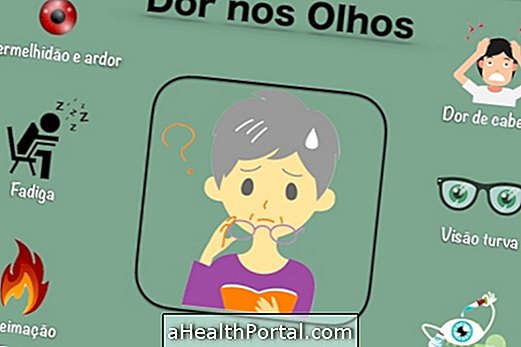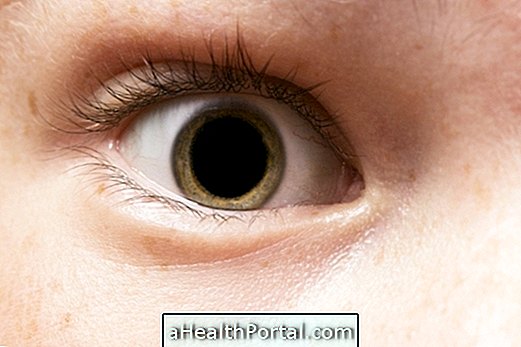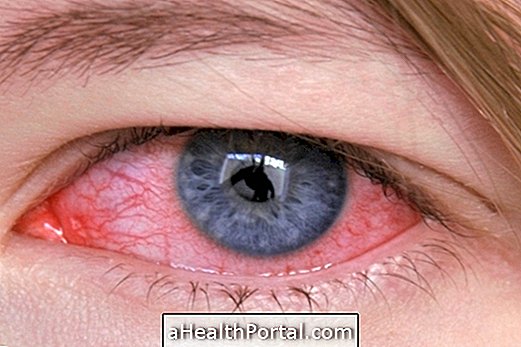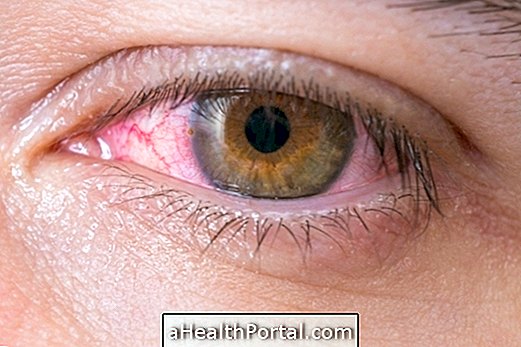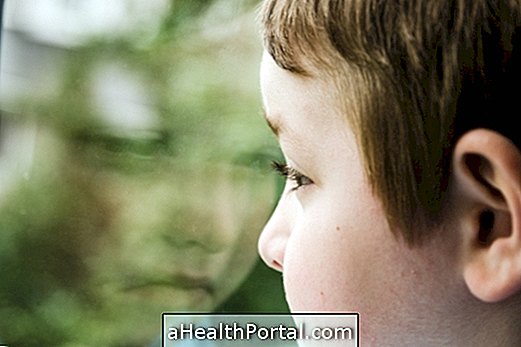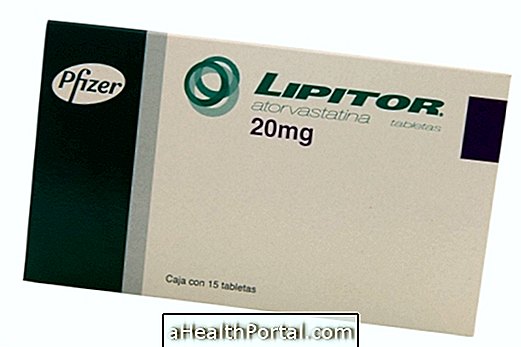Ocular effusion, or hyposphagma, is characterized by the breaking of tiny blood vessels located in the conjunctiva, causing a red blood stain on the eye. The conjunctiva is a thin transparent film that covers the white part of the eyes called the sclera.
The effusion in the eye is a fairly common situation that does not reach the inside of the eye, not affecting vision. It usually cures by itself, disappears in about 10 to 14 days, and often no treatment is necessary.
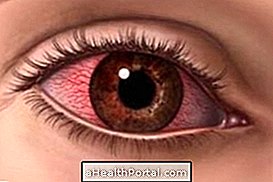

Causes of eye effusion
The causes of ocular effusion can be caused by irritative, allergic, traumatic or infectious processes. Therefore, the blood in the eye can be caused by:
- Traumas such as scratching or rubbing the eyes;
- Physical exertions such as lifting weights or intense physical activities;
- Prolonged cough;
- Repeated sneezing;
- Forcing too much to evacuate;
- Episodes of vomiting;
- Severe eye infections;
- Surgery in the eye or eyelid.
Blood pressure peaks and changes in blood clotting are less common causes that can also lead to blood in the eye.
Treatment of effusion
To treat eye effusion is not always necessary, as it usually goes away by itself within a few days. However, what can be done to speed healing is to put compresses of cold water on the eye 2 times a day.
Sometimes artificial tears are used to reduce discomfort and reduce the risk of further bleeding. The use of aspirin and anti-inflammatory drugs should be avoided.
Symptoms of effusion
The symptoms that can occur during a capillary effusion are the appearance of the bright red blood spot on the white part of the eye, some irritation and rough sensation on the surface of the eye.
The eyewash does not cause pain or change in vision, but if this happens, you should see your ophthalmologist.
Eyelid in baby
Ocular effusion in the baby is a common and uncomplicated situation, often caused by the baby himself when scratching the eye or making certain efforts such as sneezing or coughing. Normally, the blood in the eye ends up disappearing in 2 or 3 weeks.
In cases where the blood stain in the eye persists and the baby has a fever, the pediatrician should be consulted as it may be a sign of an eye infection such as conjunctivitis, for example. Here's how to identify and treat conjunctivitis in the baby.


